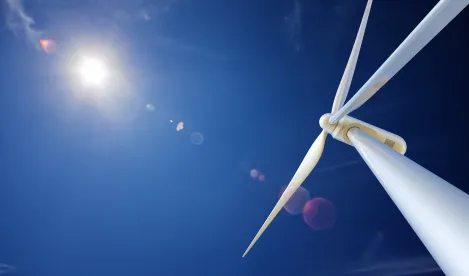ENVIRONMENTAL AND ENERGY JUSTICE
The concept of environmental justice is one of the ways in which environmental action and social justice come together. More specifically, environmental justice is typically concerned with the fair and equal treatment and meaningful involvement of all people, regardless of race, ethnicity, national origin, income, or other factors, with respect to the development, implementation, and enforcement of environmental laws, regulations, and policies.
These concerns typically arise from the lack of environmental protections for socioeconomically or culturally disadvantaged populations or a failure to enforce environmental laws that exist. For example, in the United States, environmental justice principles typically reflect injustices in Black and other communities of color, and the harms that people are typically concerned with include contamination of drinking water and soil, as well as proximity to operations and activities that emit carcinogens and toxic particulates into the air, such as mining and highways. Discussions around siting of electric generation and natural resource processing facilities also arise in this context, and these discussions may function to bridge environmental and energy justice concerns.
Energy justice is a similar concept that focuses on the equal treatment and involvement of all people— again, regardless of race, ethnicity, national origin, income, or other factors—in decisions regarding how energy is generated, distributed, and used. Energy justice concerns have become especially pronounced in recent years as more and more data shows that communities disproportionately impacted by climate change are typically communities of socioeconomically or culturally disadvantaged people. Some of the topics discussed in this context include a lack of access to electric vehicles due to the inability to afford a new car, off-street parking, or housing in neighborhoods where electric vehicle charging stations are most likely to be installed. Similarly, people in these disadvantaged communities often rent rather than own their homes, so they cannot simply install rooftop solar panels, energy-efficient appliances, and climate control units. Furthermore, they may not be able to participate in green power programs offered by local utilities if their landlords choose not to participate.
As a concept, neither environmental justice nor energy justice is new. Many jurisdictions, including the United States, have had laws and government regulations enshrining environmental justice principles for many years. These laws often concern public access to decision-making processes and equal protection of disadvantaged groups with respect to enforcement of environmental laws. Laws and regulations related to energy justice are also on the rise.
What is new is the increased focus of customers and investors in environmental and energy justice beyond compliance with applicable law, particularly in those jurisdictions where environmental laws are spotty, nonexistent, or enforced inconsistently. For instance, it is becoming increasingly popular for investors to probe how and to what extent a developer has engaged with the community when planning a renewable energy facility. In addition, as investors scrutinize their investments more, the companies in which they invest are increasingly attentive to the environmental and energy justice implications of their own operations and the practices of participants in their supply chain.
More and more, companies are setting goals that treat their relationships with employees, suppliers, customers, communities, and the world with an ESG and sustainable economy focus. These goals, and the actions taken to implement them, can encompass a broad range of considerations, including product and services sourcing, greenhouse gas output, waste handling, pollution mitigation, employee transit, and operational impacts to natural resources. In addition, corporate impact investing is on the rise, including direct investment in renewable energy facilities with specific social indicia (e.g., Microsoft’s investment in solar facilities developed by Sol Systems), workforce housing with rooftop solar, and public-private partnerships to help fund publicly accessible electric vehicle charging stations throughout a metropolitan area.
CARBON
Global emissions of greenhouse gases have long been a key interest for some investors, but they are quickly becoming a topic of interest for many more. While there are a number of greenhouse gases, carbon dioxide—referenced simply as carbon— tends to capture much of the public’s attention, particularly in the context of ESG and the sustainable economy. Conversations about carbon typically revolve around five major concepts:
-
Decarbonization is a broad term that generally refers to efforts to reduce carbon emissions resulting from various processes, for example, product manufacturing, natural resource utilization, agriculture, and residential activities such as heating and cooking.
-
Low carbon is a somewhat subjective phrase that refers to products or processes that have a lower carbon footprint than others. It is often used in conversations about the low-carbon economy, i.e., an economy powered by low-carbon energy sources.
-
Carbon reduction describes activities and processes that are comparatively less carbon-intensive than similar activities and processes.
-
Carbon neutral can refer to an activity or product that is produced without emitting carbon, or it can refer to a person’s actions to offset carbon emissions attributable to their current activities. A number of businesses and some investment firms have announced goals to become carbon neutral.
-
Carbon negative can refer to an activity that consumes, rather than emits, carbon on a net basis. It also can refer to a person’s actions to go beyond carbon neutral, including methods to offset more carbon emissions than those for which they are responsible over a defined time period. For example, a few large multinational corporations have announced goals to offset all carbon they have produced throughout the life of the corporation.
Decarbonization clearly fits within the environmental category of the ESG and sustainable economy frameworks, but it is also inherently tied to environmental justice because of the impact on socioeconomically and culturally disadvantaged groups of both climate change and many of the processes associated with sequestering carbon.
Investors utilizing an investment strategy informed by ESG and sustainable economy considerations can achieve investment goals centered on decarbonization concepts by investing in physical assets, such as carbon-capture or removal facilities. However, while carbon-capture equipment is becoming more common in certain industries, e.g., natural gas processing and electricity generation facilities, it is very expensive. Direct air capture technologies that remove carbon from the ambient air are also available and on the cusp of achieving the scale necessary to have a material impact on the climate. However, they remain difficult to finance. Carbon-capture and technology-driven carbon removal activities and sequestration also inherently present physical asset, environmental, and offtake risk. For example, the gold standard for carbon reduction is currently secure sequestration in a geologic formation. However, pumping carbon dioxide into the ground can affect groundwater, and there is always a chance of leakage. In addition, geologic formations suitable for carbon sequestration are not available in all regions. Some of these risks can be reduced by utilizing captured or removed carbon while, in some cases, still storing the carbon such that it will not easily be emitted, e.g., manufacturing of high-carbon steel and concrete. Many other utilization technologies are also available or in development, but they have not yet become commercially viable, e.g., fuels made from algae grown using captured carbon.
Investors with no appetite for physical asset risk or the business risk inherent in investing in technology with an uncertain offtake market can still participate in the low-carbon economy. These investors may prefer more established asset classes, such as sustainable forestry and agriculture, where carbon is removed and stored through intentionally deployed natural processes, such as photosynthesis and biochar application. Alternatively, investors may purchase carbon credits or offsets to meet their carbon reduction goals. These methods have been available for some time in certain jurisdictions, and they are becoming increasingly common worldwide. In addition, markets in these carbon instruments and their derivatives are evolving quickly, which should help to bring more carbon capture and removal facilities online in the near future.
THE ENERGY TRANSITION
Charles Fritts is credited with installing the first solar panel in 1884; nearly 140 years later, we have arrived at the energy transition.
At its most basic, the energy transition is the movement away from fossil-based energy sources to low- or zero-carbon energy fuels and electricity. But what does that mean for consumers and investors?
The energy transition is not merely a process of turning off coal-fired power plants and powering up wind and solar farms. Rather, it is a technology-intensive process of coordinating a variety of renewable resources to ensure that consumers and businesses can obtain the power and fuels they need to operate while generating the lowest possible carbon footprint, both before and after the energy is consumed. While the non-governmental sector has frequently advocated for this transition, it has been driven largely by governmental policy choices, such as renewable generation requirements, tax incentives, and other subsidies, as well as government spending on research and development and infrastructure development. In recent years, the private sector has also become heavily involved in the push toward zero-carbon energy by entering into a variety of contracts to incentivize the production of electricity using renewable resources as well as investing in renewable generation facilities and, recently, in carbon capture and removal.
The steps needed to accomplish the near-term energy transition goals set by many local and national governments and a growing number of corporations are daunting but achievable. These include not only building more renewable electricity generation facilities and long-term storage facilities, but also developing robust manufacturing and transportation infrastructure for renewable fuels, such as renewable natural gas and hydrogen. Transmission and distribution grids also must be reconfigured to account for much more widely distributed generation and storage assets. In addition, because the energy transition will not happen overnight, it is essential to dramatically reduce the carbon footprint of those resources needed to maintain energy reliability and stability in the interim. As the European Union noted in its July 2020 “Strategy for Energy System Integration,” it is necessary to move away from silos and vertical energy value chains to an integrated and more circular energy system. In addition, the transition from carbon-based energy to carbon-free energy presents opportunities for the workforce, but it may also require that certain personnel be retrained or relocated.
How can so much change be accomplished so quickly? Luckily, many of the key innovations needed to accomplish the energy transition are already commercially available or approaching commercial viability. Many regions in the United States and several countries already have sufficient renewable energy resources to power their grids using entirely renewable resources for significant periods of time. Offshore wind turbines have been instrumental in accomplishing that in Northern Europe and will help many more regions accomplish long-term, reliable renewable generation as government permissions processes adapt. Long-duration energy storage is also here, both in the form of pumped hydro facilities (which are enjoying a recent resurgence) and long-duration chemical batteries. In addition, large-scale production of renewable hydrogen is increasingly viable, both technologically and commercially.
Many players in the traditional fossil fuel sector are both recognizing and creating these opportunities by drawing from their long history of technological innovation in challenging environments.
ESG- and sustainable economy-minded investors can and are making a difference in the energy transition. In fact, there is currently more money 10 | K&L Gates: ESG and the Sustainable Economy in the renewable energy sector than projects. Many of the investors in this space are strategic investors; for example, many of the major oil and gas players have diversified into renewable energy and carbon-capture technologies and projects. Others are traditional project finance and private equity participants. Some are corporations that want to directly (or indirectly through derivatives) access renewable energy for their operations. Still more are retail and other private investors seeking a return for themselves and the planet through mutual funds and direct investment.






 />i
/>i

